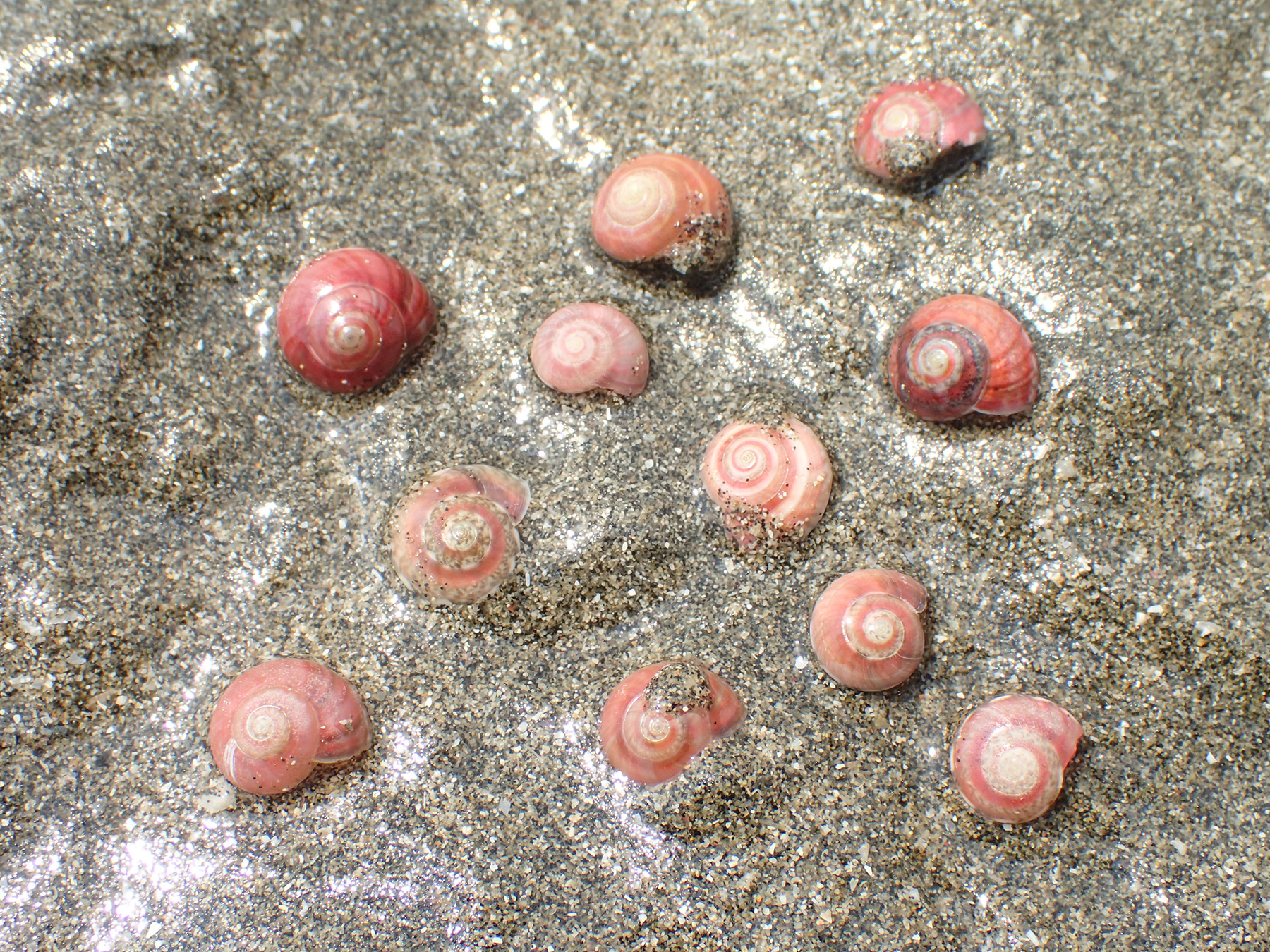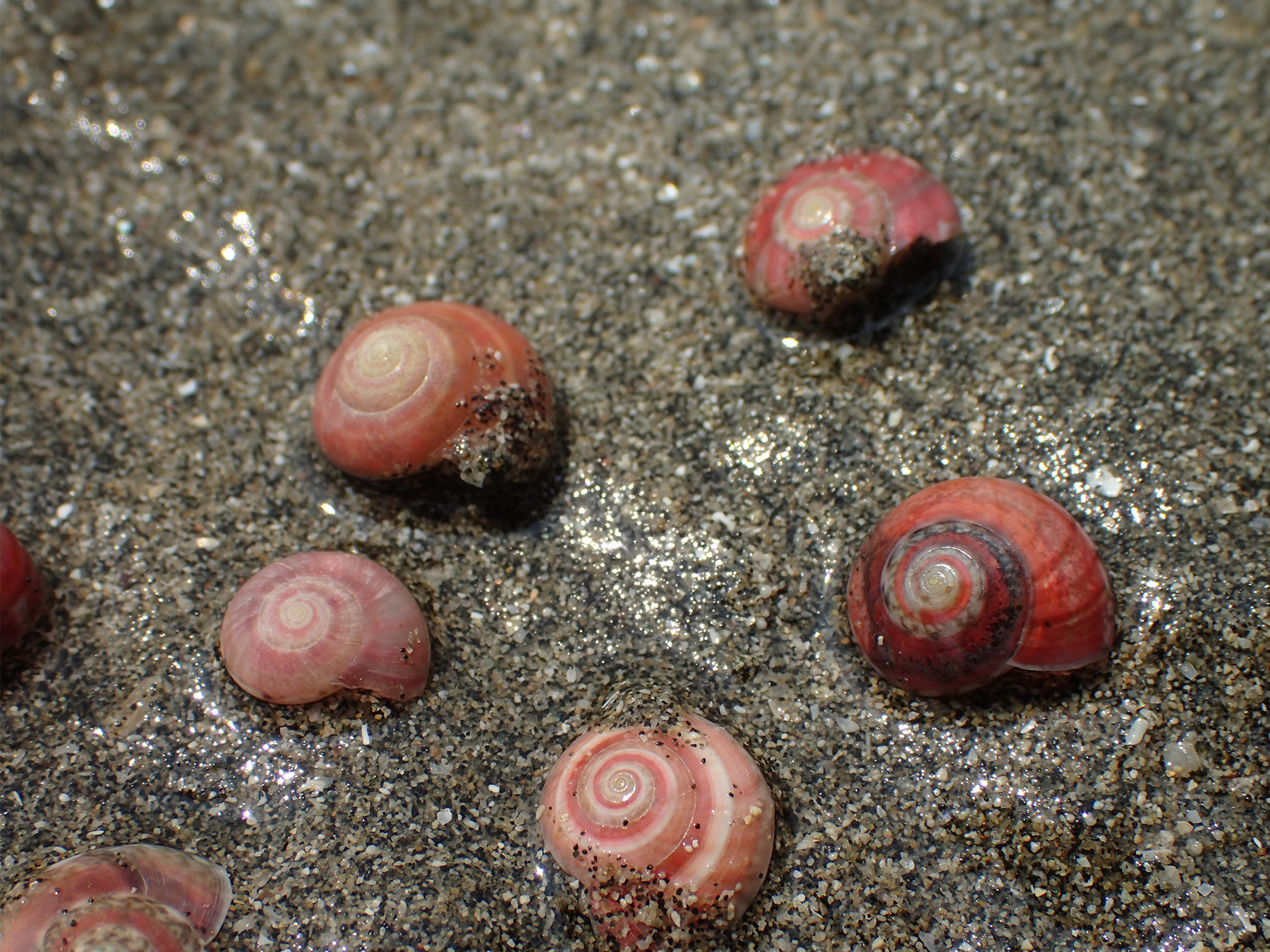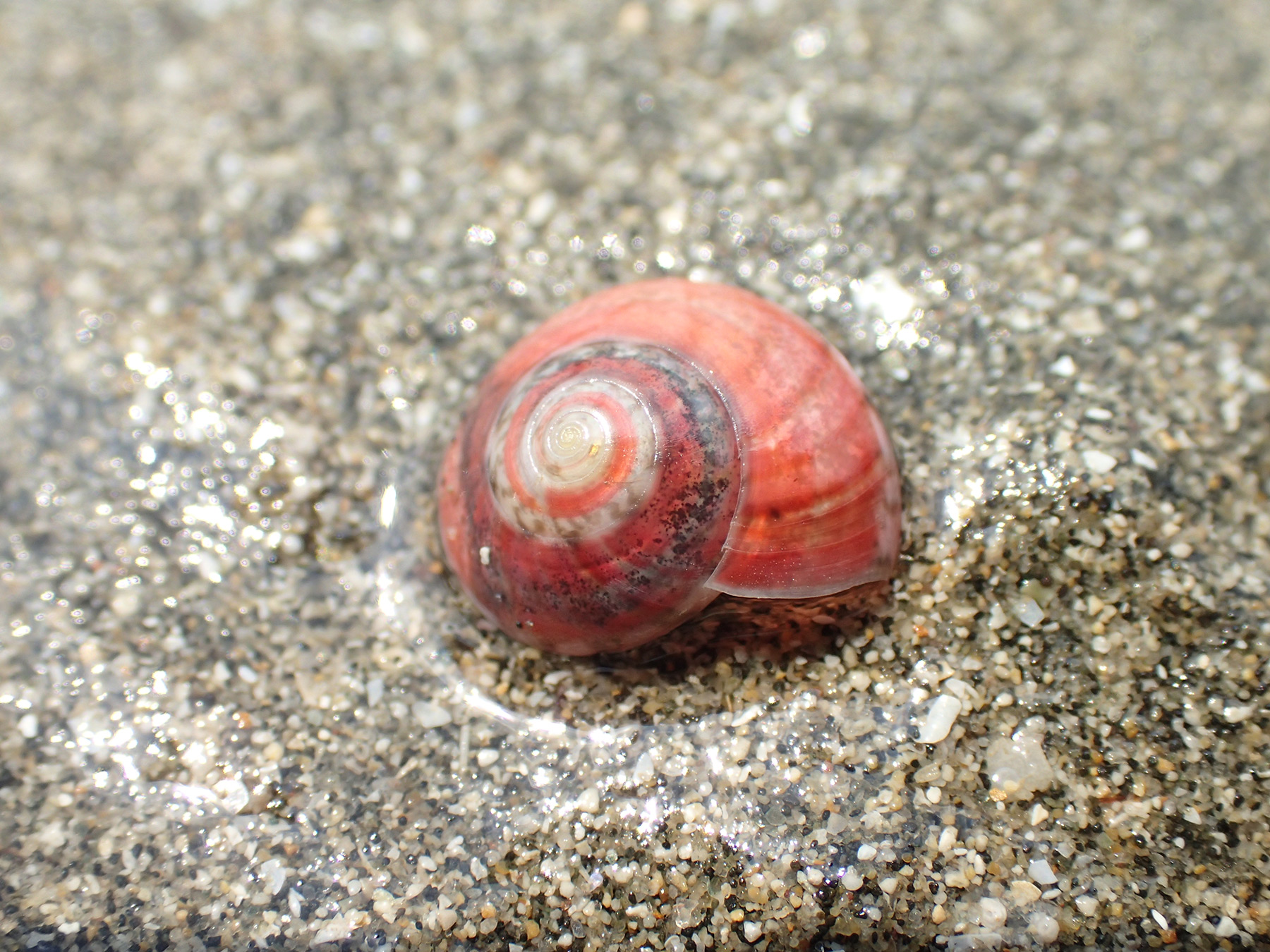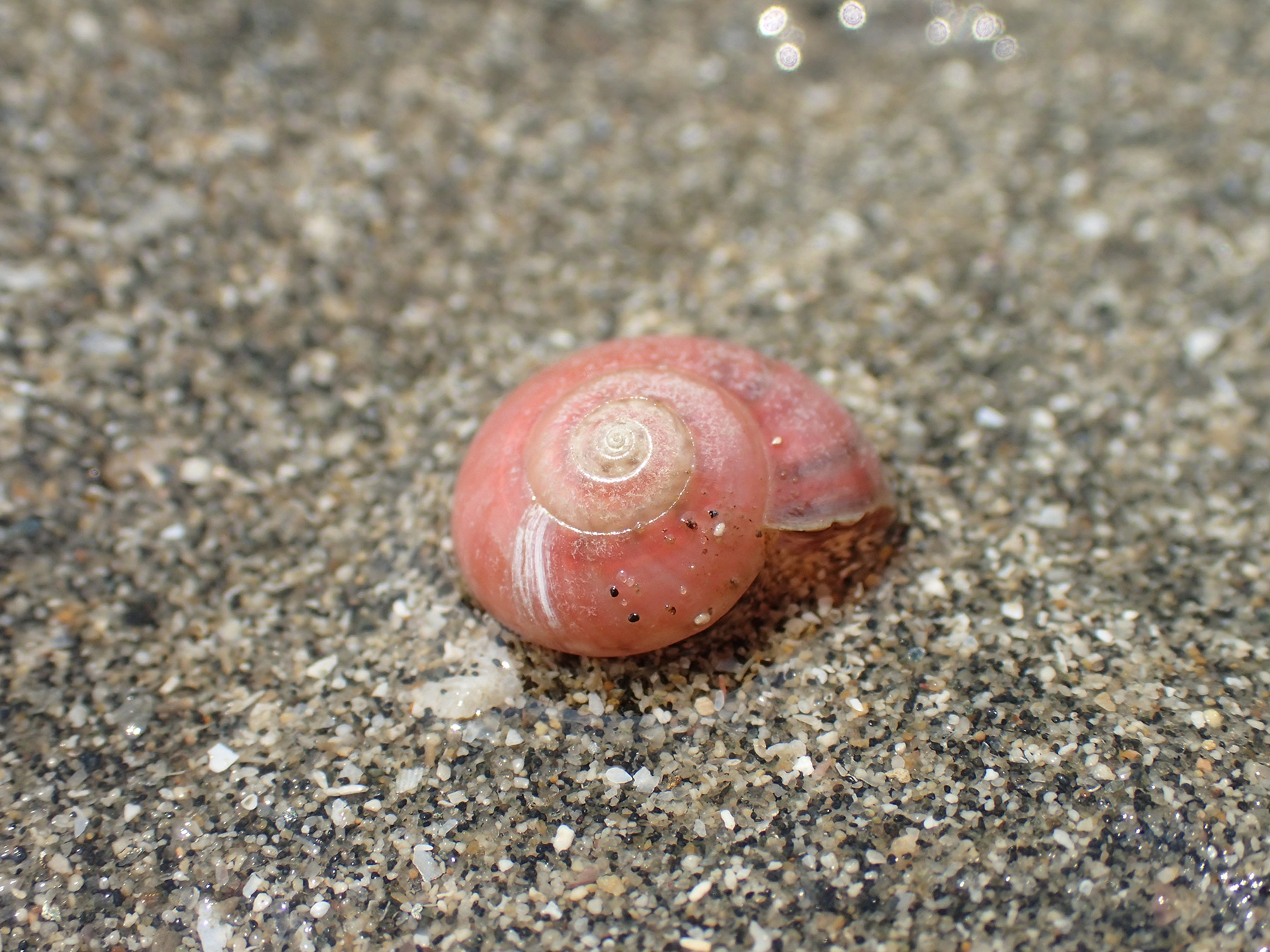Children love running around on the beach picking up little button-sized shells, captivated by their spiralling colours. These delicate little shells most likely come from Umbonium snails (also known as "button top snails"). Their shells are generally covered with networks of lines and chevrons, with various colours ranging from white, black, light yellow or even pink! Living in groups of thousands on or just below the surface of sandy shores, they add sprinkles of colours to the otherwise monochromatic sand.
Despite their tiny size (< 2cm), Umbonium snails actually have a very big role to play within the coastal ecosystem. As a filter feeder (or detritus feeder), they feed on suspended materials in the water, such as decomposed animal remains, plants or faeces, virtually acting as "cleaners" of the sandy shores. Abundant in numbers, they themselves in turn become an important food source for a range of animals, including predatory snails, starfish and fish. What's more, the empty shells that they leave behind become nice cosy homes to hermit crabs.
Umbonium snails provide economic benefits for human beings as well. Their shells are attractive in appearance, and are therefore collected and sold as a souvenir in some Southeast Asian countries.
Hong Kong's long coastlines provide ample room for Umbonium snails to flourish in, and the sandflat at Shui Hau supports a surprisingly large population. There is also something special to note about this population in Shui Hau – they live with Meretrix clams whose population dropped rapidly in recent decades. Such a rare "home-sharing" relationship was hardly seen locally and made Shui Hau the best representative of the Meretrix-Umbonium flats in Hong Kong.
To allow our children to continue to enjoy gathering colourful Umbonium shells at the sandflat, we must regulate clam digging activities that have recently become highly popular at Shui Hau, as unrestrained activity will ultimately result in the disappearance of not only clams but also Umbonium snails and other precious intertidal organisms on the sandflat. Green groups have launched a series of public education programmes to guide the public in carrying out coastal fun activities in a sustainable way. Let's continue this preservation effort, so that the generations to come can also enjoy finding these shimmering colours in the sand.



